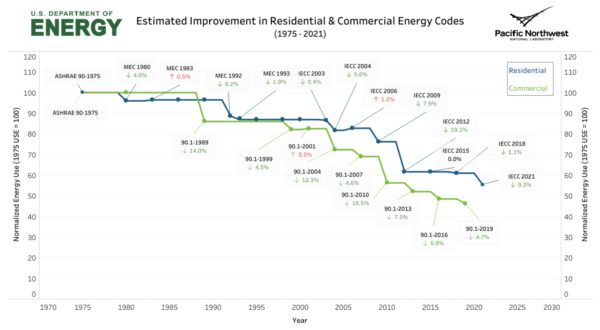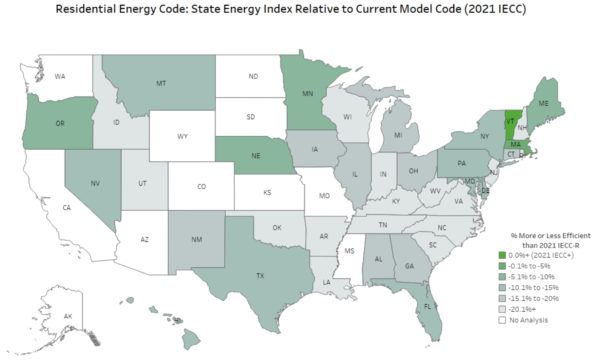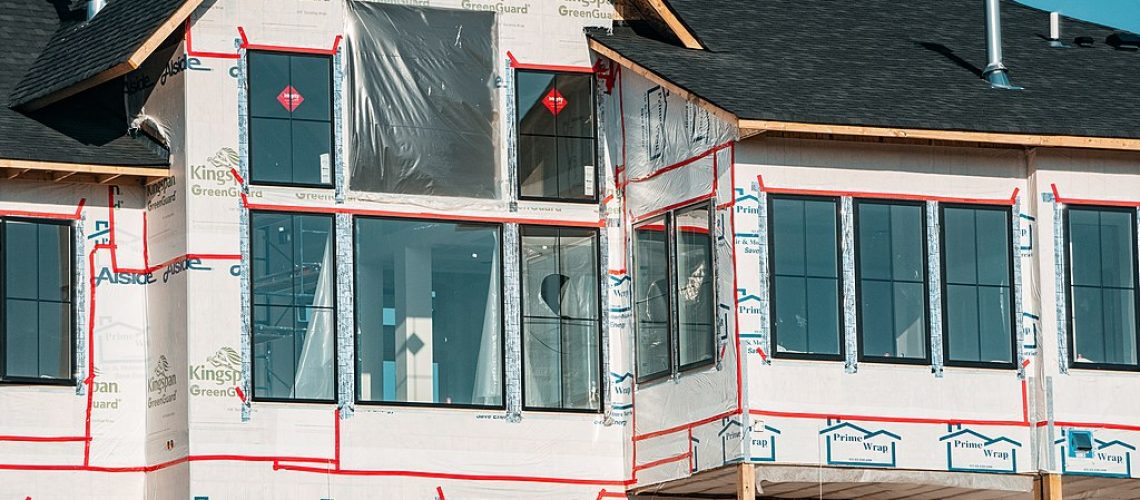The US Department of Energy (DOE) will provide $225 million in grants to cross-sectoral partnerships pursuing innovative approaches to advance state and local adoption of the most recent building energy codes for residential and commercial buildings, DOE has announced.
Building energy codes set requirements for air sealing, insulation and other measures that keep buildings warmer in the winter and cooler in the summer. Model code requirements, which states can choose to adopt, have become more stringent over time, such that buildings meeting the 2021 code requirements use about 50% less energy than buildings that met the 1975 requirements, as shown in the nearby graph.

The extra efficiency measures specified in more recent codes typically cost builders more during the construction phase, while lowering utility bills and improving comfort over the long run for occupants and owners.
DOE projects that state and local implementation of the latest building energy codes could achieve savings of up to $138 billion over 30 years. That’s based on energy savings of 9.4% for new residential buildings and 4.7% for new commercial buildings built to the latest code, compared to energy usage if built to a previous edition of the model energy code.
Because few states have adopted the latest building efficiency codes, most states could achieve efficiency gains for new buildings by adopting the latest standards, ranging up to 20% or even more, as shown in the nearby map prepared by DOE.

NREL study
In a 100% renewables grid, energy efficiency is valuable, a National Renewable Energy Laboratory study has found, as the cost-optimal strategy would involve energy efficiency improvements in existing buildings of about 60%, along with oversized renewable generation and long-term storage.
The DOE program is funded by the Bipartisan Infrastructure Law.



